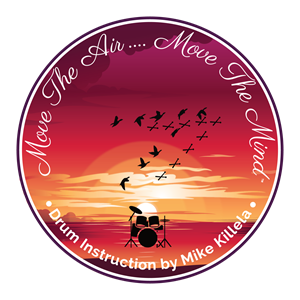Advanced, Beginner, and Intermediate Drumming Lessons Near Hatfield, PA
Beginner
The beginner level class is perfect for first-time drum students. They will learn proper techniques in support of matched or traditional grip, introduction to rudiments, reading, and rhythm with application on the drum set! The student will learn basic grooves and beats very quickly!
In this video Mike demonstrates basic Rock & Jazz Rhythms with application of the first series of Rudiments on fills around the kit!
RECOMMENDED BEGINNER SUPPLY LIST
Intermediate
The intermediate level builds on the skills acquired in the beginner class. Students explore more sophisticated rhythms and grooves and learn different musical styles. Emphasis on application and experiential learning is a big focus here. The student's repertoire begins to build and take shape, being weighted towards the student‘s interests and balanced to ensure successful achievement of goals
In this video Mike shows examples of adding color to Rock Rhythms, a salute to John Bonham’s Classic “Good Times Bad Times” groove, a modern Latin Jazz Fusion Rhythm example, some more advanced Jazz Grooves, and lastly a traditional Samba Rhythm!
Advanced
The advanced program is where it all comes together for the drummer. Working with polyrhythm and leveraging advanced techniques is the cornerstone of the program. We will take deep dives into the approach of some of the world's great drummers to advance the student's overall capacity for playing anything that comes their way! A good deal of self-directed learning is applied here as the student will have more defined goals and tastes in music at this time. It is the AMAZING culmination of all the work the student has put into the program!
In this video, Mike shows how the emphasis on Rudiments and capability building pays off with Advanced Rudiment Rhythms based on Snare Drum Drum, Polyrhythm, and exploring what’s possible with a short Solo pulling it all together!
